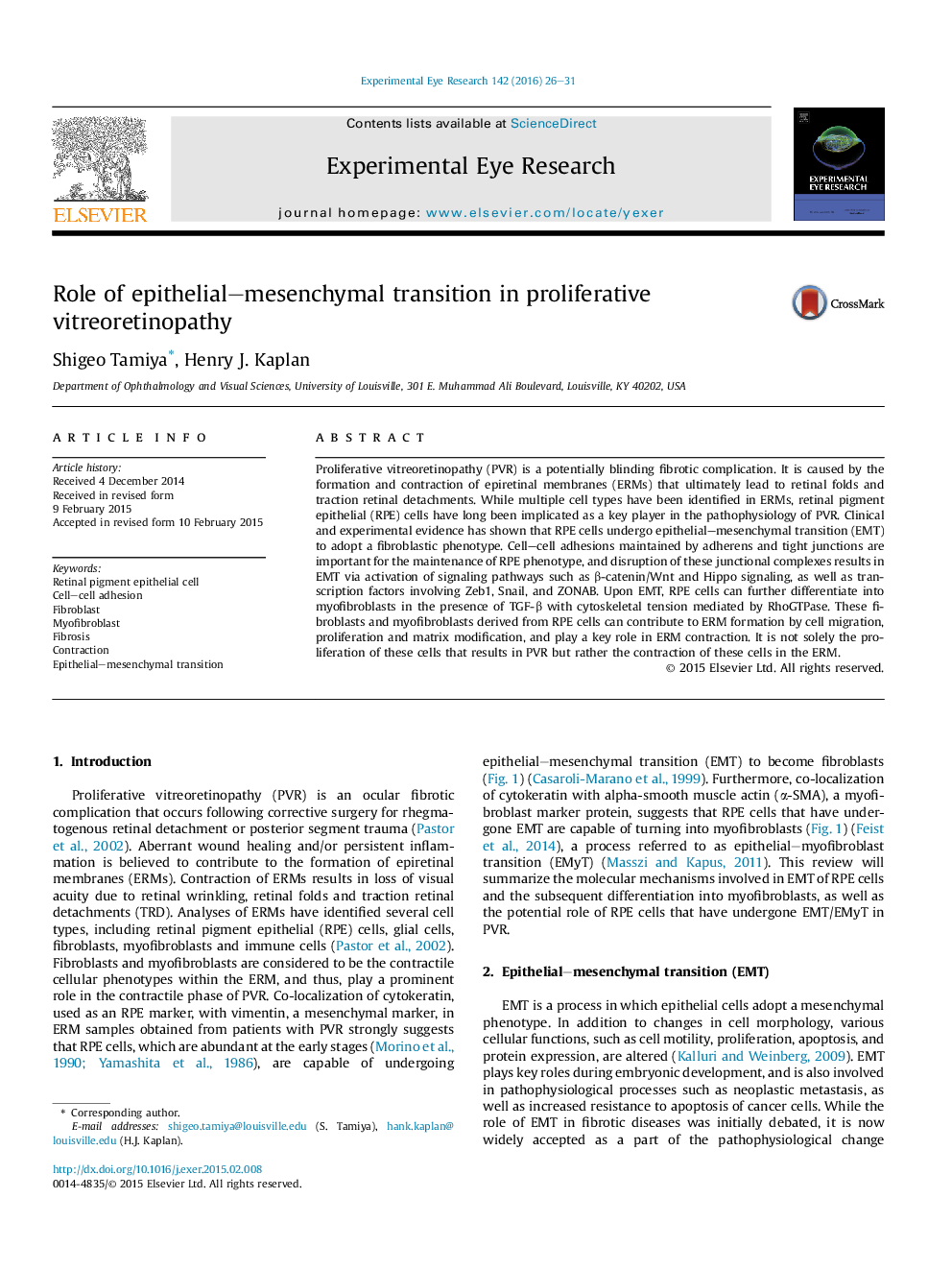| Article ID | Journal | Published Year | Pages | File Type |
|---|---|---|---|---|
| 4011110 | Experimental Eye Research | 2016 | 6 Pages |
•Cell–cell adhesion prevents EMT effectors from activating target genes in RPE cells.•RPE cells undergo EMT to adopt a fibroblast phenotype upon loss of cell–cell contact.•Fibroblasts can differentiate into myofibroblasts by TGF-β and Rho-mediated signaling.•Contraction of fibroblasts/myofibroblasts derived from RPE contributes to PVR.
Proliferative vitreoretinopathy (PVR) is a potentially blinding fibrotic complication. It is caused by the formation and contraction of epiretinal membranes (ERMs) that ultimately lead to retinal folds and traction retinal detachments. While multiple cell types have been identified in ERMs, retinal pigment epithelial (RPE) cells have long been implicated as a key player in the pathophysiology of PVR. Clinical and experimental evidence has shown that RPE cells undergo epithelial–mesenchymal transition (EMT) to adopt a fibroblastic phenotype. Cell–cell adhesions maintained by adherens and tight junctions are important for the maintenance of RPE phenotype, and disruption of these junctional complexes results in EMT via activation of signaling pathways such as β-catenin/Wnt and Hippo signaling, as well as transcription factors involving Zeb1, Snail, and ZONAB. Upon EMT, RPE cells can further differentiate into myofibroblasts in the presence of TGF-β with cytoskeletal tension mediated by RhoGTPase. These fibroblasts and myofibroblasts derived from RPE cells can contribute to ERM formation by cell migration, proliferation and matrix modification, and play a key role in ERM contraction. It is not solely the proliferation of these cells that results in PVR but rather the contraction of these cells in the ERM.
